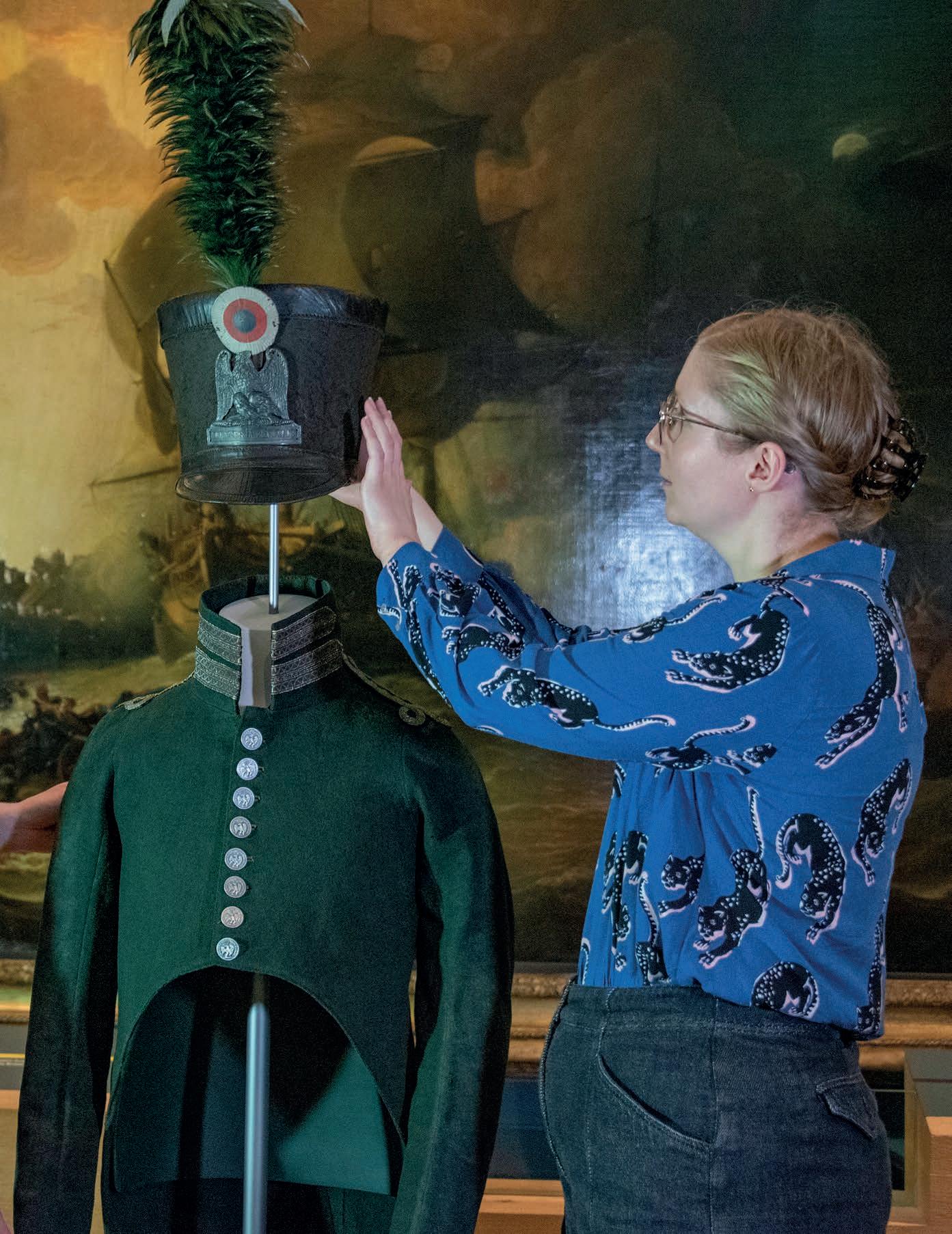






















































Literary links meet Anglo-Saxon history and Arthurian legend in this attractive Hampshire city, writes Caroline Butterwick
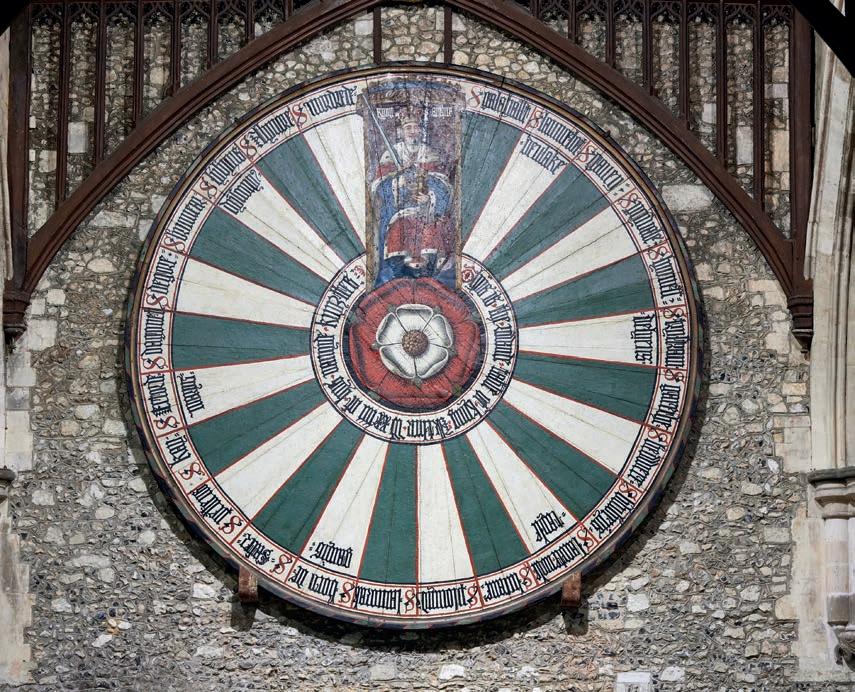
In Winchester, the past is everywhere you look, from the streets of medieval and Georgian buildings to the city’s world-famous cathedral and 14th-century Winchester College, which is still a boarding school today.
Located in the southern English county of Hampshire, Winchester has played an important part in English history for centuries – as far back as 871 it was crowned capital of Wessex by its king, Alfred the Great.
The city has connections to Arthurian legend, too, as it’s said that the legendary King Arthur’s Round Table is the one
you can see in the Great Hall of Winchester Castle. But as this table dates from the 13th century – several centuries after Arthur’s time, if the legends are true – it seems unlikely.
Nevertheless, the hall, which has hosted royal banquets and trials for treason, and the adjoining medieval-style garden are worth a wander (historicwinchester.co.uk/greathall-westgate-museum).
And, of course, Winchester is also known for its connections to everybody’s favourite Regency writer: Jane Austen.
Jane lived in nearby Chawton for most of the last eight years of her life [see our behind-
Left to right: A view through the trees of Winchester’s Hospital of St Cross, a medieval almshouse now open to the public; King Arthur’s Round Table in the Great Hall of Winchester Castle













Jeremy Flint steps inside the home of Jane Austen to learn more about the writer’s legacy and her impact on literary lovers across the globe

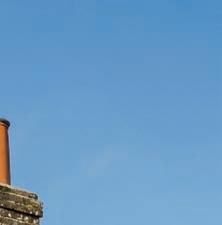


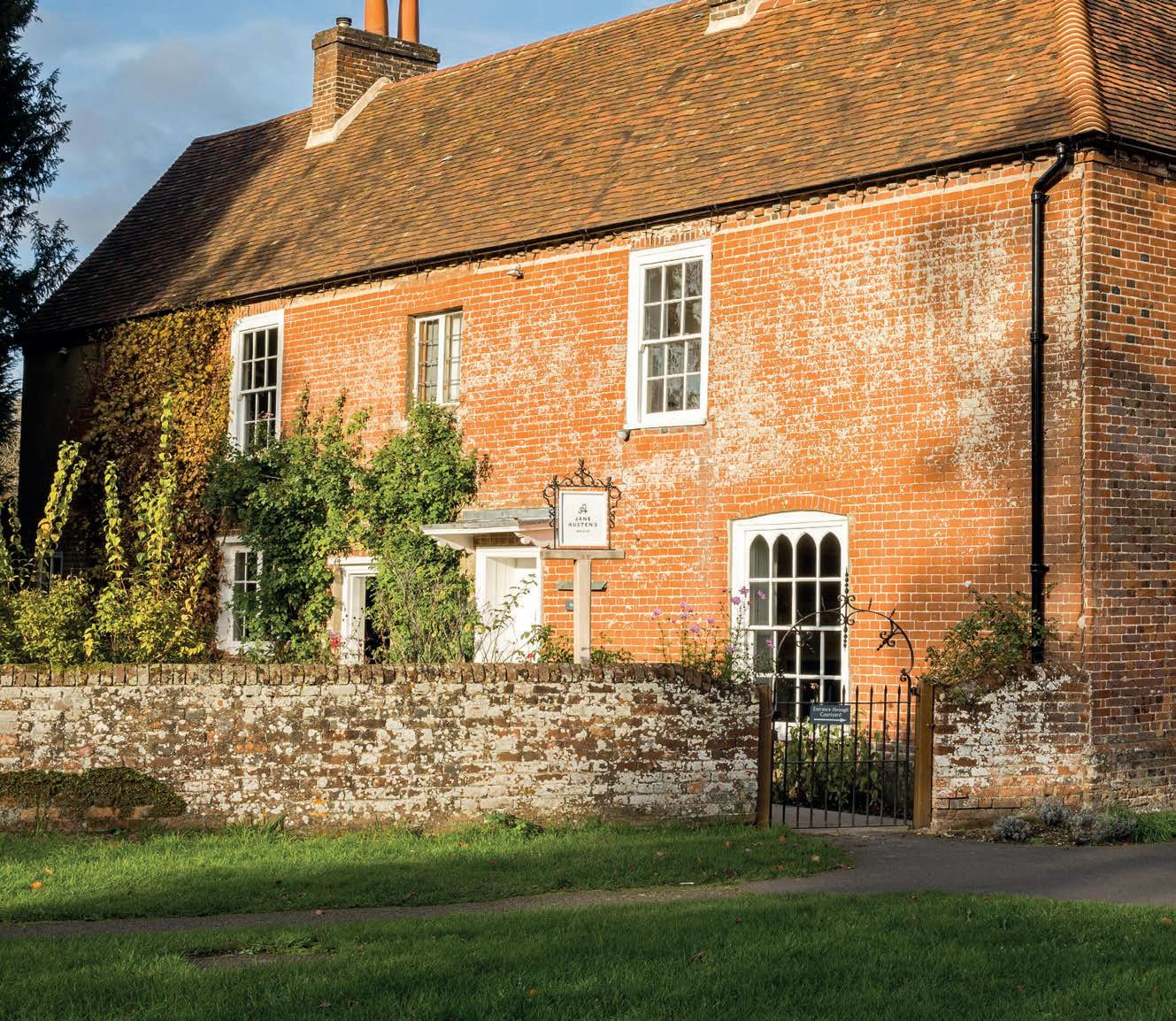







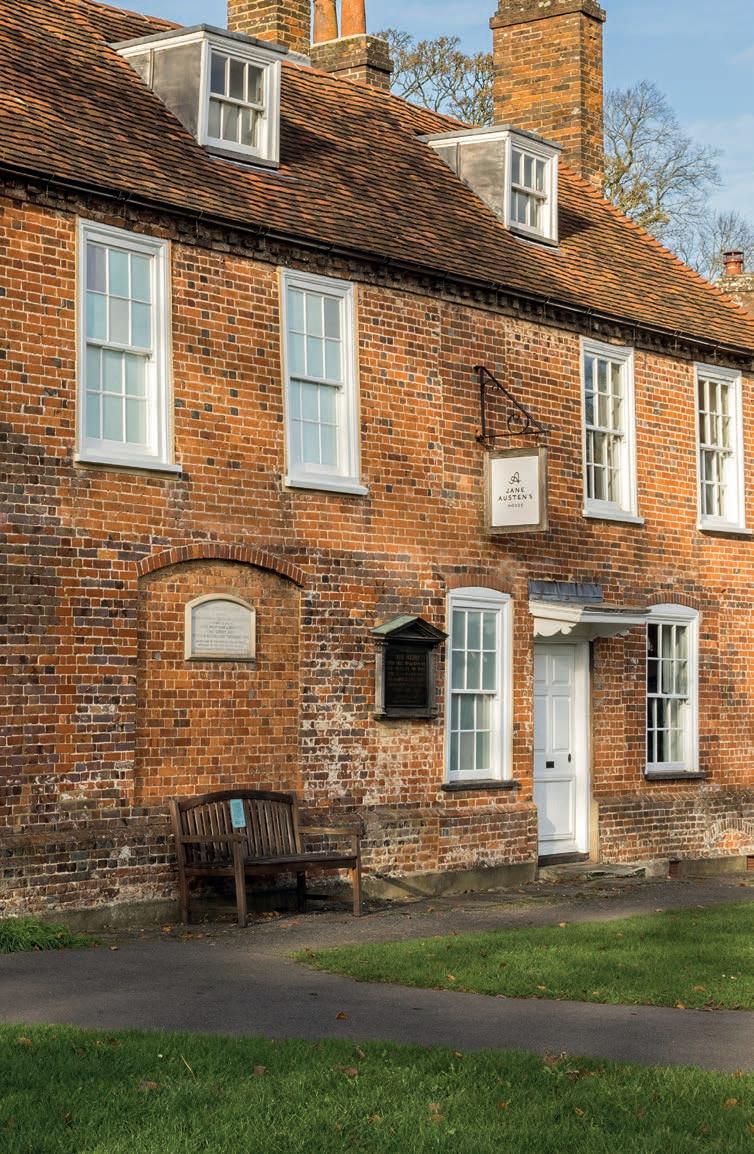
Left: This pretty cottage in Chawton, Hampshire, is where Jane Austen lived for the last eight years of her life, and is now Jane Austen’s House museum
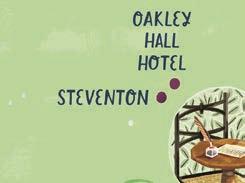


The delightful Hampshire cottage known as Jane Austen’s House is one of the foremost literary sites in the world, located in the picturesque village of Chawton.
Jane lived here for most of the last eight years of her life, and it is where she wrote her six most famous novels: Sense and Sensibility, Pride and Prejudice, Mansfield Park, Emma, Northanger Abbey, and Persuasion
Now a museum, this Grade I-listed building shares Austen’s treasures with her legion of fans who make the pilgrimage here from across the world. Wonderful collections of furniture sit beside paintings of her friends and family, personal letters, prized jewellery, first editions of her novels – even the charming writing table at which she wrote her books.
Among the canon of English literature writers, Austen has been described by many as second only to Shakespeare. Born on 16 December 1775, Jane Austen was the youngest daughter of a country rector and had seven siblings.
She wanted to be a writer and published author from a very young age and finished her official education aged just 11.
“Austen described herself as an author when she wrote in 1809: ‘I avow myself the authoress’, and this is something she was working towards, whilst she published anonymously,” says Lizzie Dunford, Director of Jane Austen’s House, who oversees sharing Jane’s story and everything she achieved here.
Lizzie tells me that Jane lived in Chawton in a supportive all-female household with her mother, sister, and friend, Martha Lloyd, with the women working

1Alladale Wilderness Reserve, Sutherland
Just an hour’s drive from Inverness and a short detour from the main A9 road, this 23,000-acre reserve is a place of vast landscapes and cinematic scenery.
Hole up for a few days in one of the remote self-catering cottages for a chance to slow down and embrace the setting, or don your hiking boots for a crisp walk where you can gulp down mouthfuls of fresh Highland air.
And don’t miss the excellent ranger-led tours to hear about the reserve’s ambitious nature restoration plans. alladale.com

As the epic North Coast 500 route celebrates its 10th birthday, Sally Coffey picks her top 10 places to visit
Adecade ago, a new travel route launched in Scotland that was like a masterclass in branding. There was nothing much new to shout about in the rural Northwest Highlands region it covered, and yet the North Coast 500 route took off – shining a spotlight on an area that until then had remained far off the tourist trail.
Not so anymore. Since 2015, visitor numbers to the region have soared and though there are mixed reports on the benefits to local businesses and residents, one thing is for sure: the brand exercise worked. It opened the world’s eyes to the many attractions – natural and otherwise – in this part of the British Isles.
In October 2024, North Coast 500 Ltd, the company that promotes the route, began asking visitors to sign a pledge to travel responsibly and protect the natural beauty, cultural heritage and community spirit of the route, and I think it’s a promise well worth keeping.
And while I’m not a big fan of visitors who race along the 516-mile route treating it as one large time-lap, I am a big fan of some of the beautiful places that you can visit along the way.
There are also several worthy detours off the main route, where you may be tempted to linger a little longer and soak up your surroundings at a much gentler pace. Here are the places I recommend visiting.
Dr Katherine Gazzard is Curator of Art (post-1800) at Royal Museums Greenwich, which comprises the National Maritime Museum, the Royal Observatory, Cutty Sark, and the Queen’s House. Here, she tells us about a new exhibition she has been working on at the National Maritime Museum, which, through a recently discovered 18th-century uniform, tells a never-before-told account of a young man’s Napoleonic ‘Great Escape’
I did a PHD on how British naval officers are represented in 18th-century portraits in partnership with the National Maritime Museum. Now I am glad to be back working here, and part of my current remit is not just looking at paintings, prints and drawings, but also uniforms.
The focus of our new exhibition is an 18th-century French customs uniform. It is a very important relic of Napoleonic and French history in itself. It is, we think, the most complete surviving customs uniform from that period.
The reason it is here at the National Maritime Museum is because of its British connection, and a Royal Navy midshipman called Charles Hare, who joined the Navy aged just 11 in 1801. When Charles was 13 his ship was captured by the French and he spent six years as a prisoner of war to the French.
It was from here that he staged this incredible, daring escape with the help of a customs officer he befriended, or perhaps bribed. This is where the uniform comes into the story, as he used it as a disguise to travel across enemy territory to the Dutch coast, where he is picked up by a British warship. From here he was able to travel home to his family in Lincolnshire. He arrived at the port at Grimsby with no money left, so he had to walk the final 30 miles home to his family home.
As well as the uniform that survives, Charles also wrote an autobiographical account of it. After he finished his naval career, he emigrated to Canada, so the uniform has been kept safe there until recently, when his family contacted the museum. It’s such a brilliant story, and it unlocks so many interesting things about warfare and the treatment of prisoners of war during this time.




